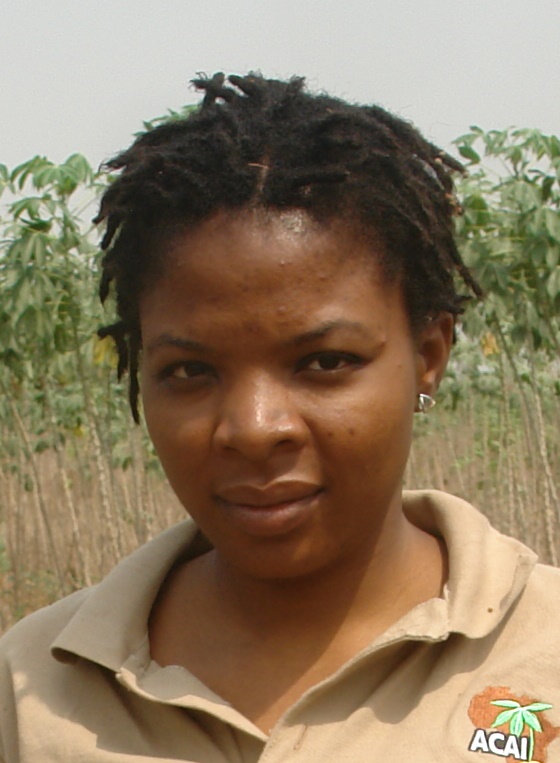E4D Fellow Rebecca Enesi
Enabling sustainable cassava starch yield increase through appropriate smallholder mechanization, scheduled planting/harvesting and the use of decision support tools.

Project duration: 2018 - 2021
Supervisor at ETH Zurich
Professor Johan Six (Sustainable Agroecosystems)
Collaborators
Dr. Stefan Hauser and Dr. Pieter Pypers, International Institute of Tropical Agriculture (IITA), Ibadan, Nigeria.
Partner institutions
external page International Institute of Tropical Agriculture (IITA), Ibadan, Nigeria.
external page Psaltry International company LTD, Iseyin, Oyo state.
external page NIJI Farms, Ilero, Oyo state.

Cassava (Manihot esculenta Crantz) is grown throughout the humid tropics; it is the fourth most important staple food crop; it supports approximately 25 percent of farming households in sub-Saharan Africa (about 100 million people) and is a major crop on 35 percent of all agricultural land (about 60 million hectares). In Nigeria, productivity is generally low at around 10-15 t ha-1 and increased cassava production is mainly due to expansion of the cropped area rather than increased yields. To meet the growing demand for households’ consumption and the processing industry, it is required to develop cropping systems with a higher productivity that can supply cassava at any time of the year.
Cassava planting dates are determined by seasonal rainfall, leading to peaks in planting and corresponding peaks in harvesting. In Nigeria, most cassava is planted in the first rainy season (April-May) and the crop remains in the field for at least 1 year, thus passes through the dry season (November to March) and is harvested after the onset of the rains, when starch content declines. Smallholder farmers face major labour peaks during the planting period, followed by several peaks in labour demand for weeding and finally for harvesting. This limits the area smallholders can plant and the quality of the crop husbandry (mainly weeding) with resulting low yields. At the same time, the cassava processing industry faces increasing problems of constant root supply at sufficient quantity and distribution across the year.
This project aims to enable smallholders to sustainably increase cassava root and starch yields through scheduled planting/harvesting, appropriate mechanization, and the use of decision support tools with the final goal of a constant cassava root supply to the processing sector leading to stable and higher incomes in South West Nigeria. This would be achieved by, firstly, improving our understanding of the effects of an expanded range of planting and harvest dates, fertilizer rates (with focus on K) on cassava growth, storage root yield and starch content / starch yield of common improved varieties through multi-locational on-farm trials at contrasting sites. Secondly, by assessing the suitability and profitability of simple, available mechanization approaches for harvesting in dry soil conditions and improve the tools where required to recommend scale-dependent best harvest tools. Thirdly, based on results from the previous objectives, in collaboration with African Cassava Agronomy Initiative (ACAI), develop and validate a Decision Support Tool (DST) on scheduled planting / harvesting and corresponding fertilizer rates, to provide recommendations to smallholders to increase production, spread labour and stabilize an increased income across the year.